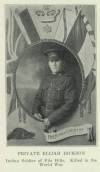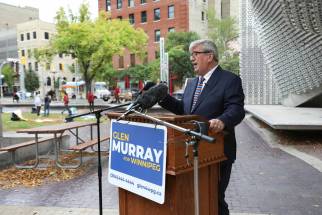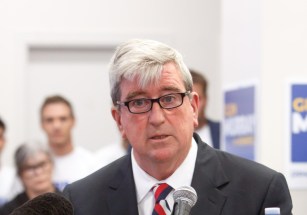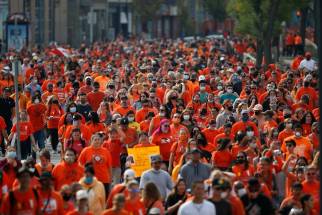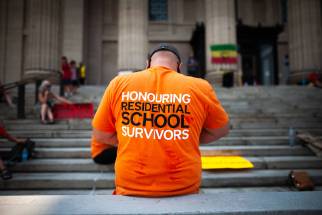Sacred stones Whiteshell petroforms, ancestor site hold deep spiritual meaning for knowledge keeper Diane Maytwayashing
Read this article for free:
or
Already have an account? Log in here »
To continue reading, please subscribe:
Monthly Digital Subscription
$0 for the first 4 weeks*
- Enjoy unlimited reading on winnipegfreepress.com
- Read the E-Edition, our digital replica newspaper
- Access News Break, our award-winning app
- Play interactive puzzles
*No charge for 4 weeks then price increases to the regular rate of $19.00 plus GST every four weeks. Offer available to new and qualified returning subscribers only. Cancel any time.
Monthly Digital Subscription
$4.75/week*
- Enjoy unlimited reading on winnipegfreepress.com
- Read the E-Edition, our digital replica newspaper
- Access News Break, our award-winning app
- Play interactive puzzles
*Billed as $19 plus GST every four weeks. Cancel any time.
To continue reading, please subscribe:
Add Free Press access to your Brandon Sun subscription for only an additional
$1 for the first 4 weeks*
*Your next subscription payment will increase by $1.00 and you will be charged $16.99 plus GST for four weeks. After four weeks, your payment will increase to $23.99 plus GST every four weeks.
Read unlimited articles for free today:
or
Already have an account? Log in here »
Hey there, time traveller!
This article was published 29/09/2022 (1164 days ago), so information in it may no longer be current.
“Is it OK if I make a smudge?” Diane Maytwayashing asks on a mid-Monday morning in the kitchen of her home in Seven Sisters Falls.
She leaves the room for a moment before returning with a large shell packed with sage. She lights the medicine with a wooden match and begins to smudge herself, washing her body with the plumes of white smoke that coil from the shell and evaporate into the air, filling the room with the sweet smell of medicine and prayers.
Then, she offers a smudge around the table, patiently and humbly waiting to share her story and the story of the land.
The kitchen is quaint and tidy. A streamer of dried medicine bundles hangs over the sink between two sets of open cupboards. Boxes of fresh harvested vegetables from her garden sit on the floor by the back door. They were just picked the night before amid a frost warning. Maytwayashing loves seeds and gardening. She is most comfortable in nature.
Her traditional name is Yellow Sun Woman, and she is from the Bald Eagle Clan. She is a knowledge keeper, Sundancer, a sweat lodge holder, a pipe carrier and a land-based educator. She’s lived in the Whiteshell for 10 years, though she’s been coming to the area for 25 years. The region is a sacred space of forest, lakes, rivers and rocky terrain; it’s breathtakingly beautiful. But it was the ancient petroforms — the placements of stones by ancient Indigenous ancestors in the form of circles, turtles, serpents, water creatures and women formations — that really drew Maytwayashing in. She says she felt as though she stood at the gateway to a great spiritual domain.
MIKE DEAL / WINNIPEG FREE PRESS For knowledge keeper Diane Maytwayashing, walking around and listening to teachings her friend gifted to her about the Bannock Point petroforms was a profound experience.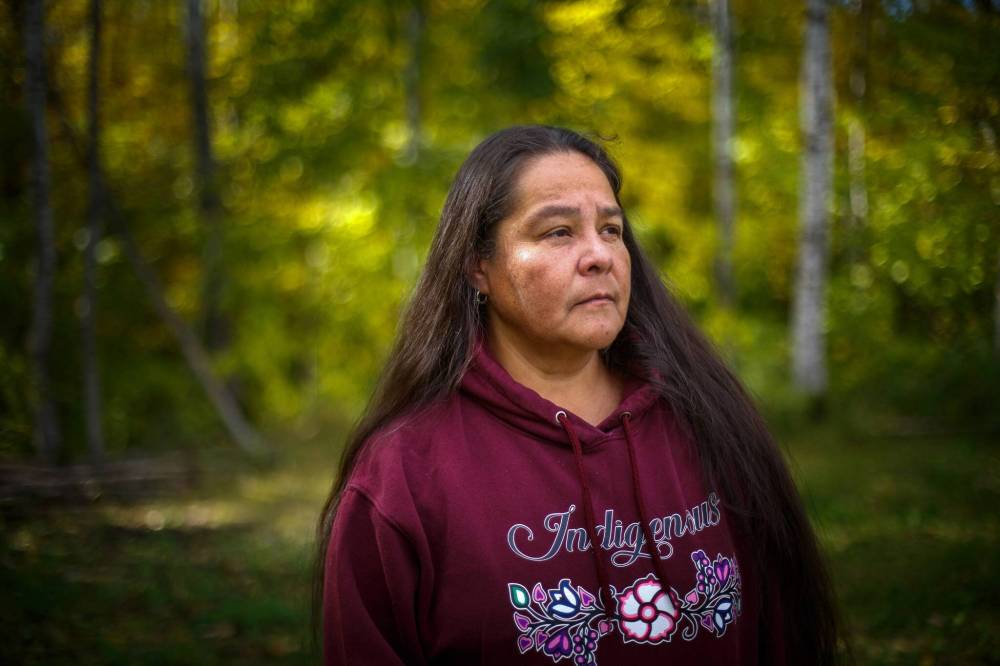
“When I first came to the petroforms, I wasn’t in a good place — I wasn’t doing drugs or alcohol, I just wasn’t in a good place with myself. I was about 30 years old, and I felt like the world was really ugly, and I felt like I didn’t want to be here anymore,” she explains as she runs her fingers through her long, auburn brown hair.
“My friend brought me here; he had the knowledge of the area, and he said ‘I want to take you to this place. It may help you or may not help you.’ He said ‘it’s a sacred site, you know, there’s these stones there and I’ll tell you the story about them.’”
The site is named the Bannock Point Petroforms, but many still acknowledge it by its original Anishinaabemowin (Ojibwe) name — Manidoo-Abi — which translates to As Where the Spirit Sits.
Walking around and listening to teachings her friend gifted to her about the formations at the site was a profound experience. She decided she wanted to fast in the area, and made her way back a few weeks later, scared and alone.
Maytwayashing did this each year, fasting for the seven teachings and then she fasted for her own wellbeing and knowledge of the area.
“The petroforms — they saved my life,” she says. “I was coming back here every year to fast and for ceremonies, and I saw that some of the petroforms were moved around and desecrated. And I thought ‘I’m gonna move here because this place saved my life. And I’m gonna give my life to this place.’ I hope that what I’ve learned from this place could help others in their life.”
She knew moving to the area would bring her closer to nature. She figured it would give her the chance to enjoy some boating, fishing and swimming. Instead, she ended up with more work following the discovery of ancient remains, carbon-dated to between 2,000 and 10,000 years old, of six people that were unearthed on the shores of the Whitemouth River. Their bones, along with the remains of other Indigenous ancestors from other parts of the province, were held in storage at the University of Winnipeg.
“When I first came to the petroforms, I wasn’t in a good place — I wasn’t doing drugs or alcohol, I just wasn’t in a good place with myself.”–Diane Maytwayashing
Maytwayashing was one of several knowledge keepers who helped return the ancestors to Mother Earth. The process to repatriate the remains took more than a year and a half. When it was time, a ceremony was held and the remains were carefully buried in a little spot by the riverbank in the Whiteshell, on what she calls the Ancestor site.
“When we met with these ancestors, they had this energy that can be best described as a ‘love’ energy. Oh, were they ever so powerful,” Maytwayashing wrote in a 2017 Facebook post.
On this morning, the air outside is brisk. The trees are a million shades of green, brown, orange and yellow. Beams of sunshine burst through the kitchen window as Maytwayashing scurries to a nearby room that she uses as an office to grab a painting she created. It is part of a series depicting landscapes in the Whiteshell. She was awarded an arts grant from the Manitoba Arts Council to create this series.
“I started painting the petroforms. It’s healing for me to do art. When (the paintings are) done I’m going to do an art show and talk about the petroforms and how important they are, and the teachings — I love them so much.”
The painting has a turtle petroform in a grassy field. In the sky is an arch of stars, representing the Milky Way — the pathway to the spirit world. In the field is a tall Indigenous woman with long black hair and copper skin. She is wearing a long brown dress with white detailing, meant to be shells. The woman is one of the ancestors Maytwayashing helped return to the land.
“There was this one dream I had of her when we were beginning the process of repatriating the ancestors, and in the dream I saw her — and she is a really tall woman, maybe six or seven feet tall. She was standing there with her eyes closed and her hands towards the sun and her skin was shimmering, it looked like copper, and her hair was pitch black and straight. It was past her knees. I didn’t see her feet because her dress covered everything. But she had these little shells around her dress, and when they did find her remains, she had a buffalo skull with her and those little white shells — so when we buried her, we put the buffalo skull back and those little white shells,” Maytwayashing says in her soft-spoken voice.
“I decided to paint her. She means so much to me.”
MIKE DEAL / WINNIPEG FREE PRESS Diane Maytwayashing, at her home in Seven Sisters Falls, shows one of the paintings she is working on of a petroform.
At the ancestor site, just a few minutes from Maytwayashing’s home, there are large animal droppings on the pathway leading to a small clearing where she set up a sweat lodge. The droppings are likely from a bear. There are chokecherries and plums that grow in the forest of tall birch trees and shrub surrounding the area, though she says the bears never come around when there is a fire going.
It is a quiet spot, overlooking still water that used to run fiercely before the hydro dams were built. The ancestors are buried down the embankment a little way, in a wooded area where trees have already started to grow on top of the unmarked burial site. The trees offer protection.
“When we repatriated the ancestors here, then I decided ‘OK, I’m just going to set up the sweat lodge here so we can have ceremonies here with the ancestors,’” she says.
She’s been a sweat lodge keeper for nearly half her life. She was gifted a pipe and buffalo skull, after her fourth Sundance, from an elder who told her that she would run sweats and ceremonies.
It’s a special place — mystical, she calls it. It’s where she feels a deep sense of connection to the land and to the ancestors.
“Nature is powerful, you know? We can’t control it; like when there’s a thunderstorm. In my teaching of the Thunderbird when I do my tours, I say that they’re the ones that govern the waters and the fire,” she says. “Because, if they want, they can start a forest fire, and you can’t stop them. And they’re the ones that will bring water — rain — and you can’t stop that either. Nature is powerful, and water is powerful too. Water can bring down a mountain just by being persistent.”
A few weeks ago, during a gathering at the site, traditional knowledge keeper Isaac Murdoch from Serpent River First Nation shared teachings with Maytwayashing and others.
MIKE DEAL / WINNIPEG FREE PRESS Diane Maytwayashing shows an ancestor site near the rapids in Whitemouth Falls Provincial Park. Several ancestors who were reclaimed are buried in the area.
“We walked around and he showed us all these medicines in the trees, and we walked in the woods here,” she says, pointing at a mass of trees and brush. “There were these plums — probably the bears ate them already — but those were Indigenous plums. I thought someone planted a tree, but he said no. These original trees are the trees we use in Sundance; they’re called the leader trees. The Ogamaa trees. They’re growing and they’re everywhere. He gave us all these teachings of these trees, like when you rub your hands on those trees, you use the white powder that comes off as mosquito repellent, or sunscreen.”
Maytwayashing is Anishinaabe with Scottish ancestry. She was born in Portage la Prairie in 1965 but grew in Winnipeg in the Maples area. Her father’s side of the family is from Lake Manitoba Reserve and her mother’s side is from Sandy Bay. Both of her parents were residential school survivors. Growing up, she went to a Catholic church — because this was the way her parents were taught in the schools. While her younger brothers attended catechism classes, she didn’t. She was, she says, the rebellious one.
When it came time for the siblings to receive their first communion, a nun told her mother Maytwayashing wouldn’t be able to participate because she didn’t attend the classes. They had caught the young girl out back of the church smoking.
“My mom told me that I’ll probably go to hell, because that’s what she learned in residential school,” she says. “So, I always thought well, OK, well I’m going to go to hell so I can’t go to church. But when I got older I thought that I need a spiritual life.”
Maytwayashing says her parents, who were fluent in their Anishinaabemowin language, would pray in their own way. Even though her parents went to church, they would pass on some of the traditional teachings they’d retained to their children.
“They would speak in Anishinaabemowin, and they were fluent because that was their first language, and it was my first language too, up until I was six years old,” she says. “And I saw and I understood what they were saying — they would talk about the moon phases. That was really important for me and it helped me. They carried it on in that way — but they didn’t teach us, but we just watched them and we learned.”
She attended her first ceremony, a sweat, in Peguis First Nation when she was in her late 20s, but wasn’t totally sincere about it. It wasn’t until a few years later, when she found the petroforms, that she found a true meaning and understanding in the lands and in herself.
MIKE DEAL / WINNIPEG FREE PRESS When she first visited the area around the Bannock Point petroforms, Maytwayashing says she wasn’t in a good place emotionally. 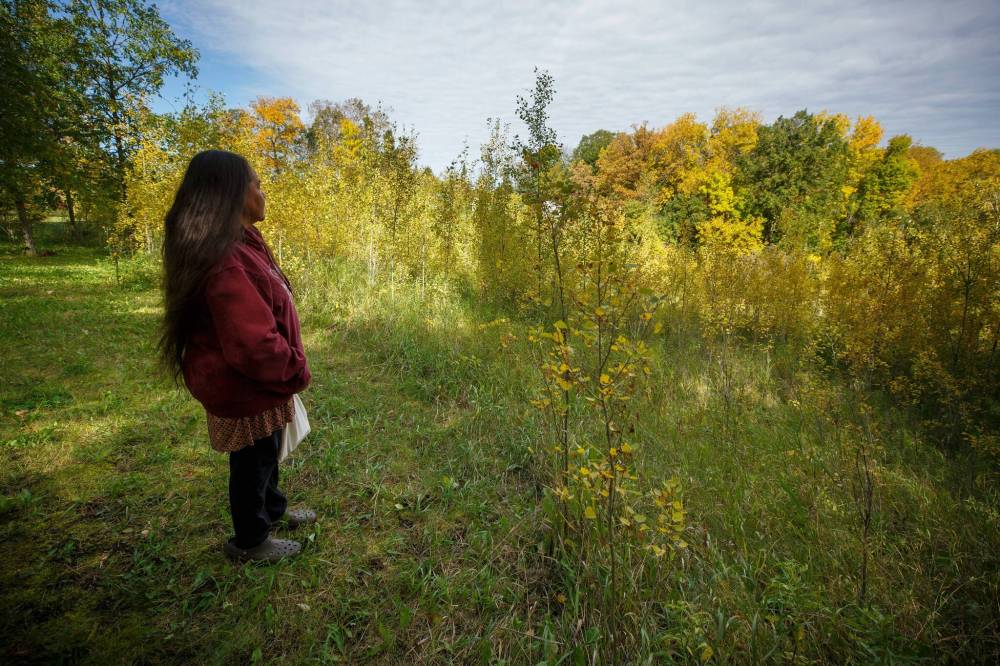
Sometimes she will come into the city to women’s centres and share teachings on Indigenous matriarchy, which she describes as spiritual and ecological. It is not political, like society’s definition of feminism. In fact, she says, feminism has colonial constructs, because to do it, you’re stepping into the same arena with the colonial system and you’re fighting for equality in that colonial system.
“We already know that the water is a woman spirit. We know the moon is female energy, because the moon governs the waters on the earth and the woman are the stewards of the waters. And the earth —Mother Earth — is a woman,” she explains, adding that traditional Indigenous culture and society was matrilineal, running off the knowledge, wisdom and life experience of grandmothers in the community.
“Indigenous matriarch is our system — I don’t even want to call it a system, but the way that it worked is that everyone knew their roles, and everyone was equal in the circle of life — all the animals, the plants, the trees, and the people. And the way that we lived was that everyone was taken care of in that circle. No one was to go hungry. There was no poverty, no hunger.”
“The way that we lived was that everyone was taken care of in that circle. No one was to go hungry. There was no poverty, no hunger.”–Diane Maytwayashing
Maytwayashing shares her knowledge and teachings as the heritage interpreter of the Whiteshell Petroforms. She gives land-based tours of the area to school groups, organizations, families and individuals who want to learn more. She is still on her own journey of uncovering the stories and teaching behind the hundeds of petroforms that far surpass Bannock Point, going all the way to Pauingassi First Nation and Bloodvein — where they have been made a world heritage site.
She has met with government officials over the years in an effort to gain better protection for the ancient Whiteshell formations.
Walking gently away from the sacred site, Maytwayashing’s love and gratitude for Mother Earth is evident. Her soft eyes light up when she speaks of what the ancestral land has done for her and how she hopes others can find the same healing in the stories the ancient formations tell. The path she is following has been taking shape for thousands of generations by the ancestors who have wandered this land before her.
“I keep learning about this area, and the connection to this area — all of our connections,” she says. “The petroforms have saved my life in many ways, and in return for this I feel like it is my responsibility to share them with the people.”

Our newsroom depends on a growing audience of readers to power our journalism. If you are not a paid reader, please consider becoming a subscriber.
Our newsroom depends on its audience of readers to power our journalism. Thank you for your support.
History
Updated on Thursday, September 29, 2022 8:56 PM CDT: Updated University of Winnipeg in story
Updated on Thursday, September 29, 2022 8:56 PM CDT: Updated reference to teachings
Updated on Thursday, September 29, 2022 9:02 PM CDT: Updated Maytwayashing's hair colour
Updated on Thursday, September 29, 2022 9:58 PM CDT: updated where Maytwayashing grew up
Updated on Friday, September 30, 2022 6:17 AM CDT: Clarifies Maytwayashing grew up in Winnipeg in the Maples area





